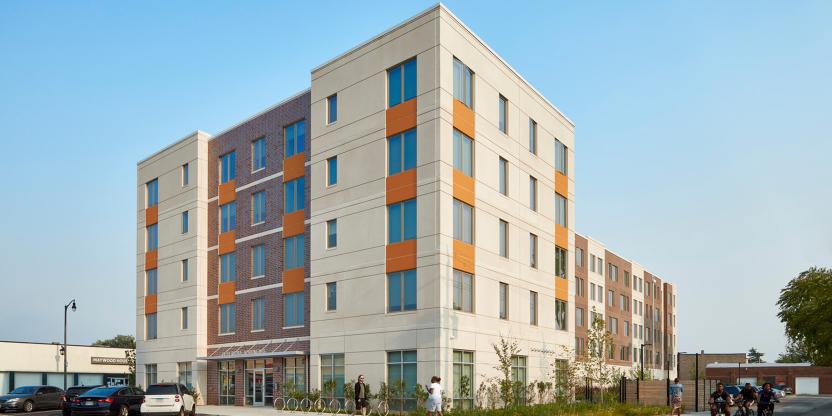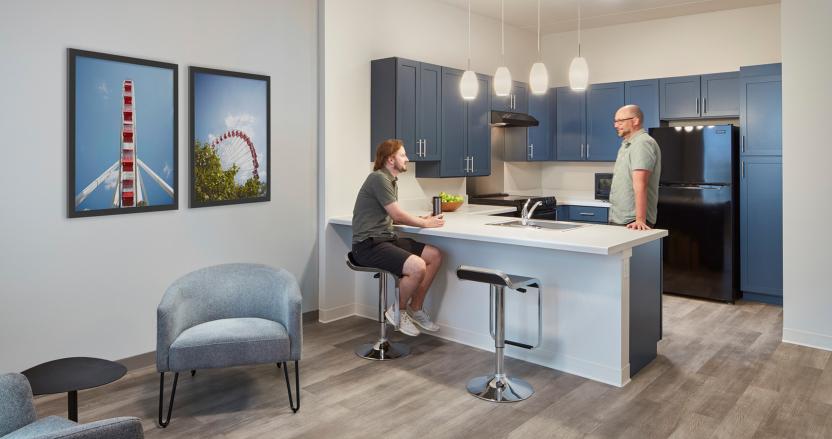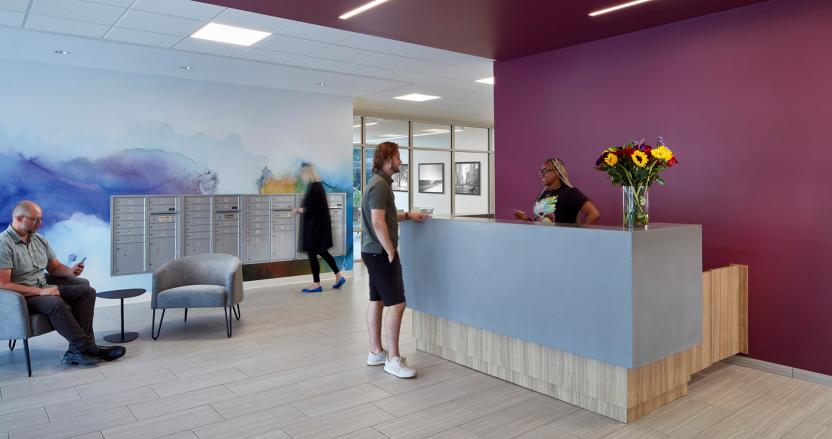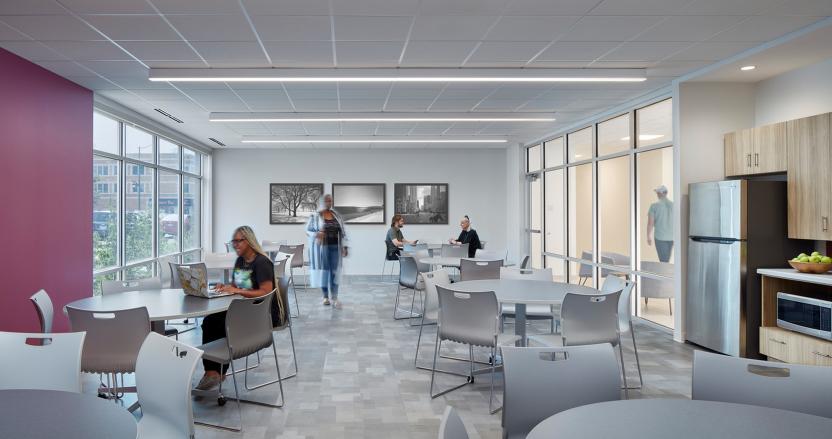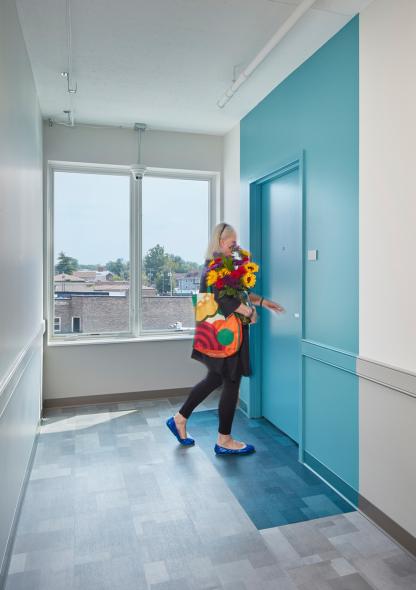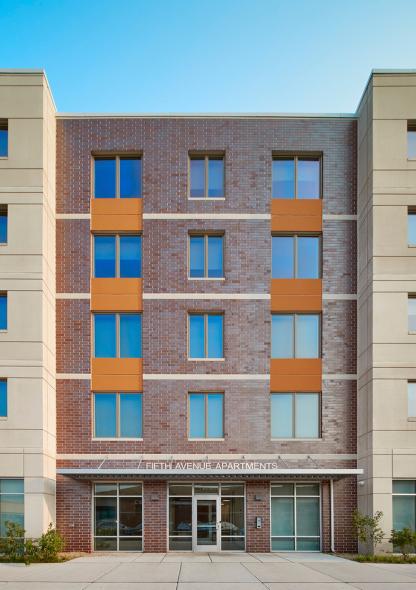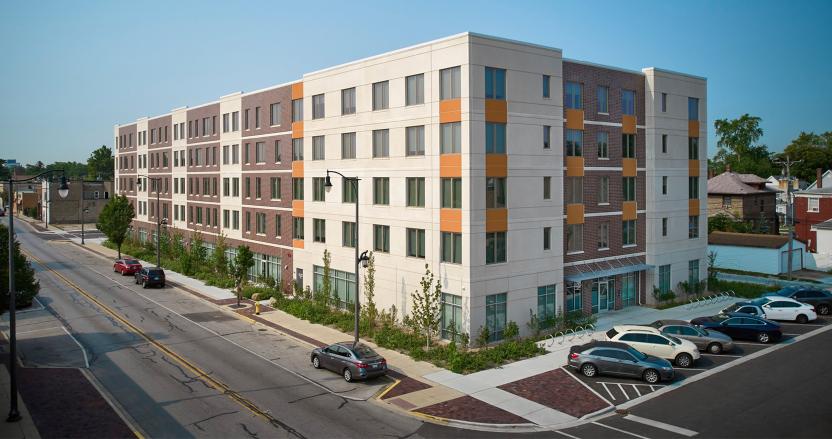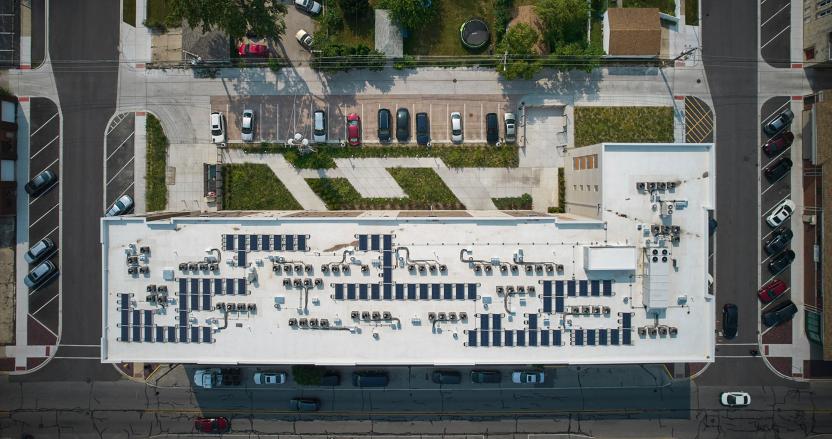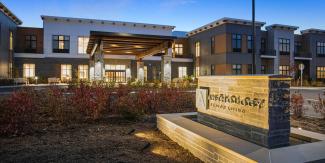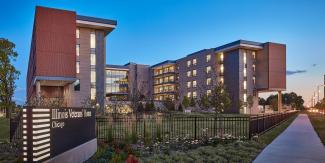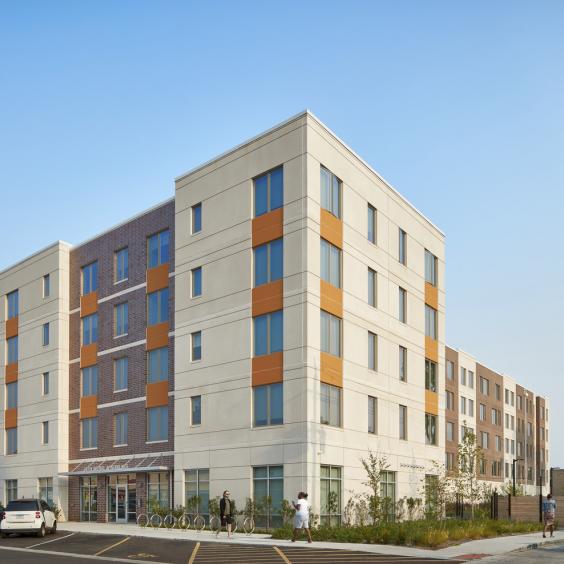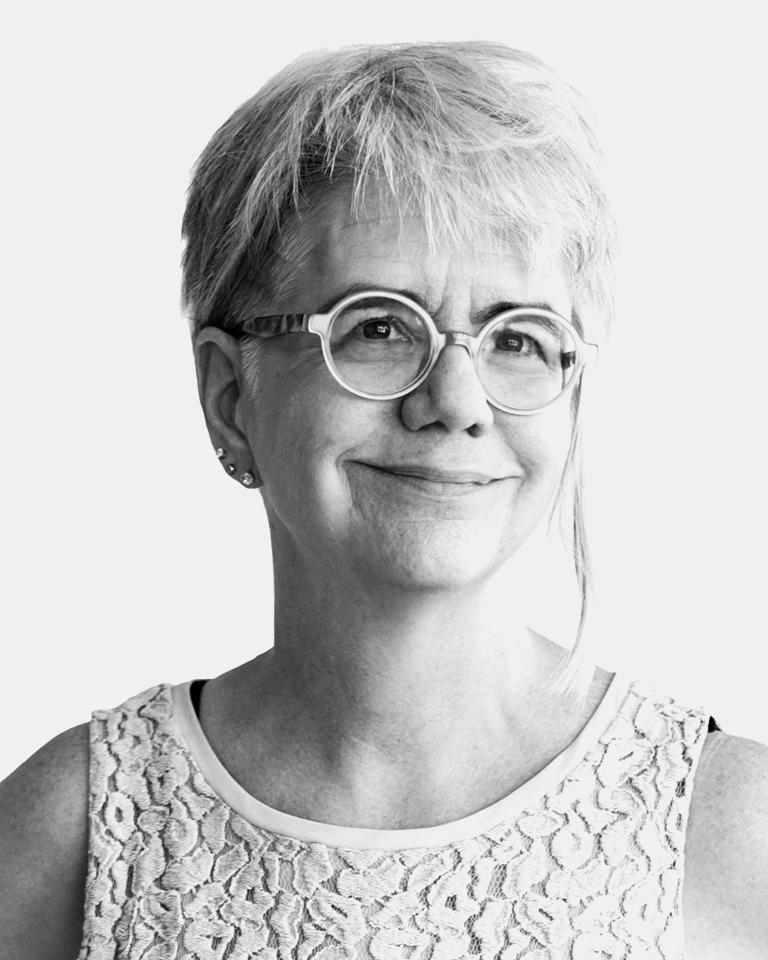Overcoming years of resistance to affordable housing development in Maywood, Illinois, a historically underserved neighborhood outside Chicago, the Fifth Avenue Apartments were designed by HED specifically to meet the needs of lower income working families and individuals, including homeless veterans. The five-story development is comprised of studio, one-, two- and three-bedroom residential units providing affordable housing for households at or below 60% of the area median income (AMI), along with interior and exterior shared community spaces. It also includes approximately 4,000 square feet of retail space on the ground floor, currently slated for development into a grocery store, addressing the lack of this amenity in the area.
Additionally, during the design process, Fifth Avenue Apartments was an aspirational case study via the Affordable Housing Pilot for the Living Building Challenge. Fifth Avenue Apartments ambitiously aimed to provide more sustainable and healthy living conditions while maintaining the desired affordable mix. These goals are especially poignant in affordable housing, which has historically struggled to meet financial goals while providing tenants with exceptional, healthy facilities and finishes.
As a result of the LBC Pilot participation, in addition to what HED already considers standard sustainable basics (high efficiency heating and cooling integrated with the building envelope, low flow plumbing fixtures, low emitting interior finishes, etc.), the HED team was able to streamline its processes while achieving additional benefits for the end users, including:
Materials Petal Design Influence: HED developed an internal methodology for vetting and specifying Red List free materials in conjunction with advocating to manufacturers to produce more options. This resulted in a reduction in the use of vinyl, which in addition to being difficult to recycle, produces toxins when manufactured.
Energy Petal Design Influence: HED’s approach to energy efficiency is shifting from combustion/fossil fuel-based systems to electric based systems that can be powered by renewables, which are longer lasting and more resilient. The result is that Fifth Avenue is 95% electric and energy use is offset by a 24KW photovoltaic array.
With a nationwide shortage of affordable housing, it is important to celebrate successful projects like this one that was designed, built, and occupied quickly with over 3,000 letters of interest and 1,700 applicants for the 72 units. These apartments now provide housing with dignity for people with incomes as low as 30% of the area median income.
Additionally, during the design process, Fifth Avenue Apartments was an aspirational case study via the Affordable Housing Pilot for the Living Building Challenge. Fifth Avenue Apartments ambitiously aimed to provide more sustainable and healthy living conditions while maintaining the desired affordable mix. These goals are especially poignant in affordable housing, which has historically struggled to meet financial goals while providing tenants with exceptional, healthy facilities and finishes.
As a result of the LBC Pilot participation, in addition to what HED already considers standard sustainable basics (high efficiency heating and cooling integrated with the building envelope, low flow plumbing fixtures, low emitting interior finishes, etc.), the HED team was able to streamline its processes while achieving additional benefits for the end users, including:
Materials Petal Design Influence: HED developed an internal methodology for vetting and specifying Red List free materials in conjunction with advocating to manufacturers to produce more options. This resulted in a reduction in the use of vinyl, which in addition to being difficult to recycle, produces toxins when manufactured.
Energy Petal Design Influence: HED’s approach to energy efficiency is shifting from combustion/fossil fuel-based systems to electric based systems that can be powered by renewables, which are longer lasting and more resilient. The result is that Fifth Avenue is 95% electric and energy use is offset by a 24KW photovoltaic array.
With a nationwide shortage of affordable housing, it is important to celebrate successful projects like this one that was designed, built, and occupied quickly with over 3,000 letters of interest and 1,700 applicants for the 72 units. These apartments now provide housing with dignity for people with incomes as low as 30% of the area median income.
